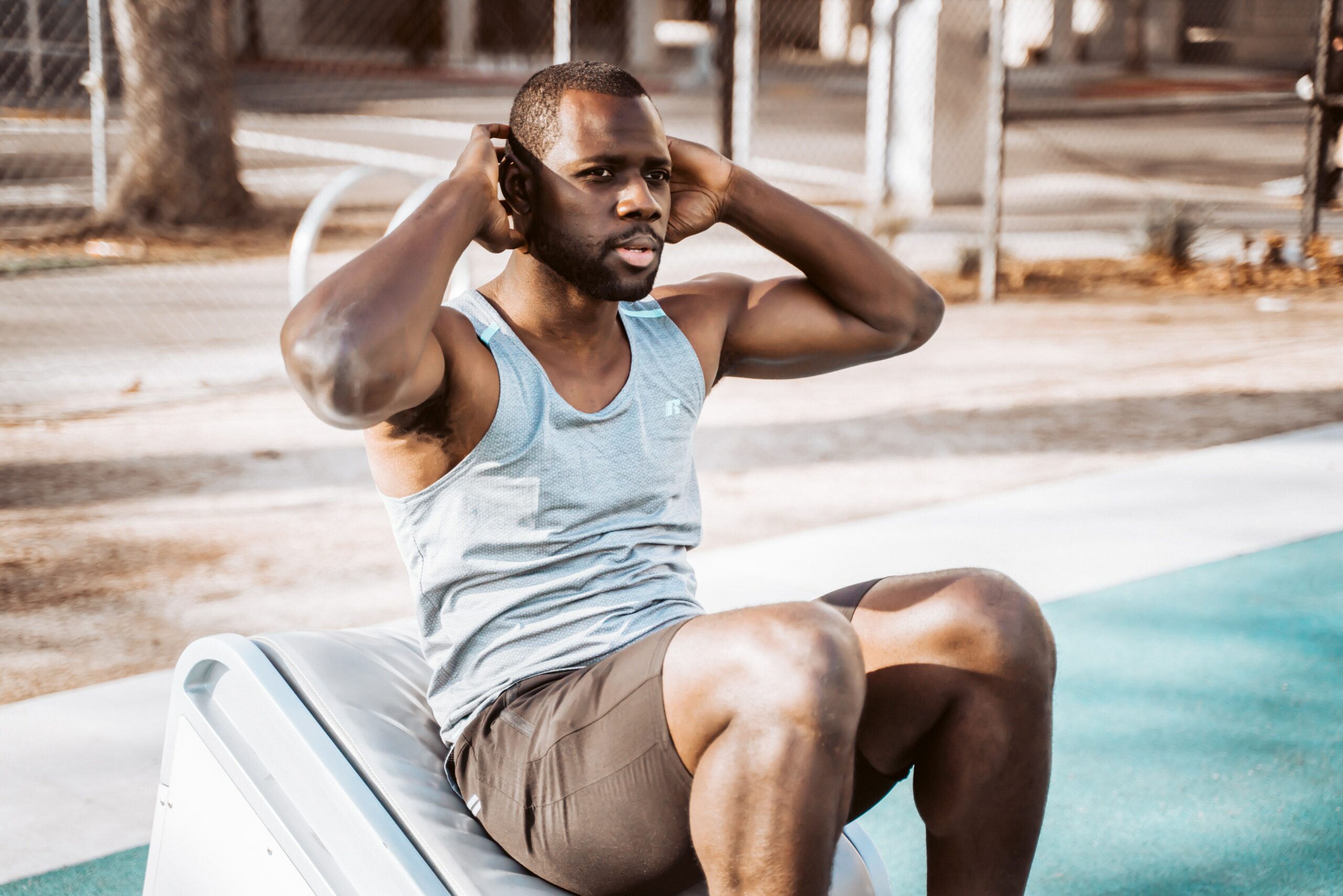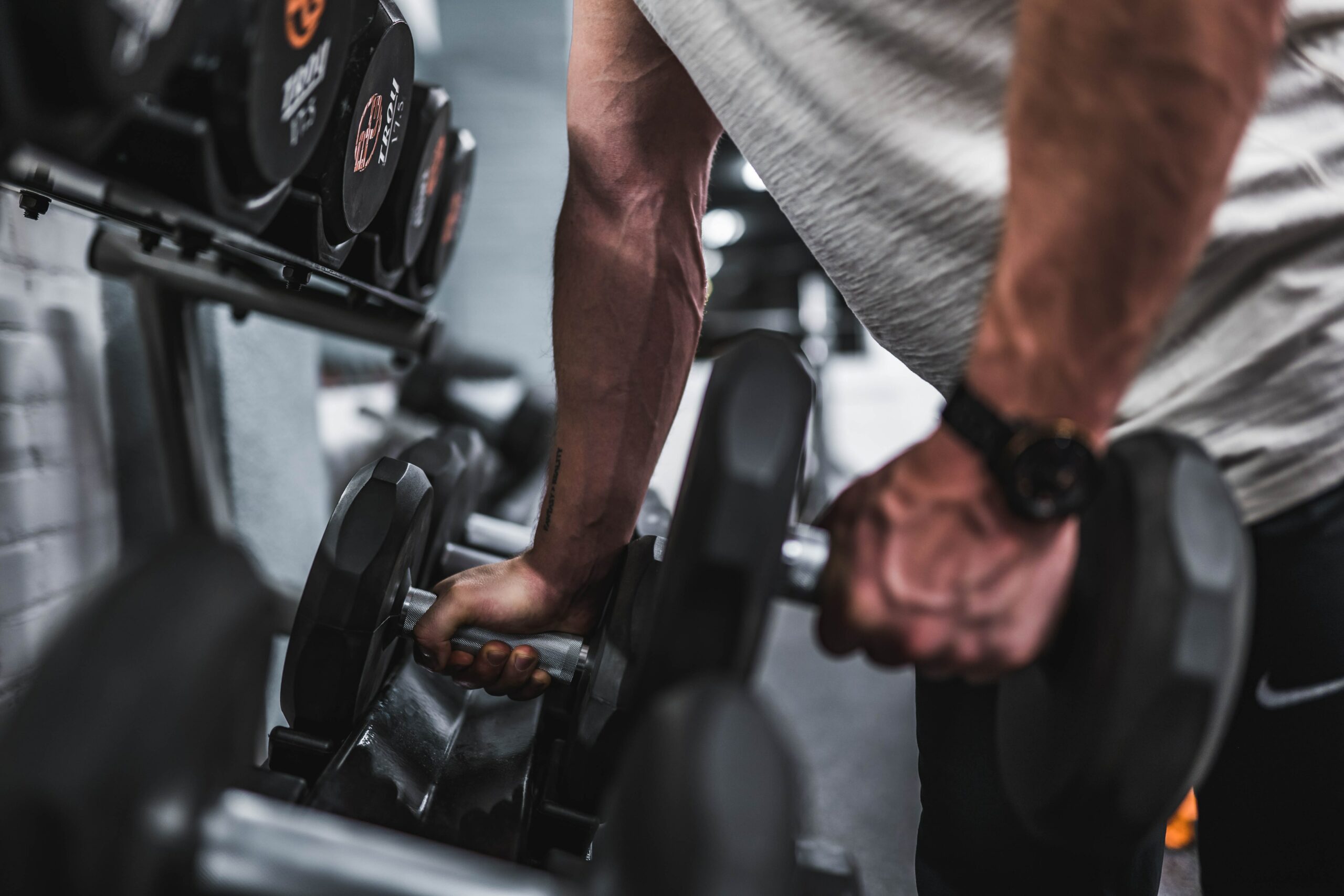
30% of men in the UK don’t exercise.
It’s a terrifying truth skyrocketing obesity, disease, and infertility rates.
Unfortunately, people tend to focus on looking good and fitting into the right jean size rather than the internal impact exercising has on the body.
Exercise isn’t just for looking good. It’s a crucial element to balance male hormones – essentially the entire inner workings of your body. The following article explains men’s hormones and the best types of exercise to regulate them for an energised, healthy, and happy life.
What are Hormones?
Hormones are chemical signals made from clusters of cells called endocrine glands. Hormones are responsible for sexual activity and reproduction, mood balancing, energy efficiency and development. The are multiple hormones in the human body, and dysregulation of one can cause massive internal disruption.
Key Male Hormones
Various hormones in the body are crucial to health. However, key male hormones are typically associated with reproduction and benefit from regular exercise.

Testosterone – Testosterone is an androgen (sex hormone) higher in men than women. It’s mainly released from the testes. Its use in men is producing sperm, sexual functioning, growing hair (especially on the face, back, and pubic region) and regulating mood and energy levels.
RELATED: Do you have a testosterone imbalance?
Luteinising hormone (LH) and follicle-stimulating hormone (FSH) – The pituitary gland secretes these hormones, which are essential for reproduction in both men and women. They regulate testosterone to ensure the testes create the correct amount of sperm.
Prolactin – Produced in a gland near the brain, prolactin is another crucial reproduction hormone that regulates the production of sperm, and if there is an imbalance may cause erectile dysfunction (ED).
Oestradiol – Oestradiol is a form of oestrogen, a female sex hormone. Men change some testosterone into oestradiol to generate sperm and balance sex drive and sexual functioning.
Thyroid-stimulating hormone (TSH) – TSH signals the thyroid to produce hormones. The thyroid is a gland responsible for metabolism, mood regulation, and triggering the release of other hormones. It’s imperative, and if it’s not performing correctly, it can wreak havoc on the body. You can read How to Test Your Thyroid Function here.
RELATED: Problems with excessive weight loss or gain, mood swings or fatigue? Try our Thyroid Function Blood Test.
Cortisol – This stress hormone puts your body into fight or flight mode and gives you adrenalin. It’s healthy to have low cortisol levels in the body, but too much can cause hair loss, anxiety, and major organ failure.
The Benefits of Balancing Hormones
-
- Better sleep quality – When you exercise, it releases serotonin, which stimulates the production of melatonin (a hormone that makes you sleepy).
- Regulates libido and sexual function – If your testosterone is low, you may struggle with erectile dysfunction and a lack of sex drive.
- Improves mood – Moving gives your body a surge of dopamine and serotonin (the happy hormones), which regulates your mood and reduces depression and anxiety.
- Increases fertility – If the male sex hormone, testosterone, is dysregulated, it can cause a drop in sperm count. At the same time, too much testosterone can cause the brain to stop making testosterone entirely and, therefore, sperm.
RELATED: Are you trying for a family? You might be interested in this Fertility Blood Test.
-
- Lowers stress – Exercise initially releases cortisol (the stress hormone). However, once your heartbeat and blood pressure return to baseline, it reduces cortisol levels in the long term. This helps you become more resilient when encountering stressful situations and boosts sleep.
- Balances insulin levels – The role of insulin is to help transport glucose to give you the nutrients and energy you need. However, if you have too much sugar, you can get insulin resistance, and your body stops producing the insulin it needs. Exercise uses up excess glucose and protects the body against diabetes.
RELATED: Noticed excess peeing, feeling tired and thirsty all the time? Take a Diabetes Blood Test.
- Stimulates the lymphatic system – Lymphatic systems are tubes or vessels running throughout the body and supporting the immune system. It can become blocked or constricted, leading to a build-up of fluid, and causing inflammation. Exercise helps increase fluid flow and movement, detoxify the body, and flush out toxins and excess waste.
- Improves digestion – You can identify whether you are living a healthy and active lifestyle by your bowel movements. If you feel bloated, blocked, or emptying your bowels is inconsistent, exercise will improve it by circulating blood through the intestines and digestive system.
How Exercise Balances Hormones

The body is interconnected, and exercise keeps your body and brain communicating through hormones.
Exercise activates the heart and nervous system, signalling the brain to release hormones. For example, when you are active, you move almost every part of your body, including your muscles, whether running, walking, cycling, dancing, or weight lifting.
Stimulating the fibres in your muscles triggers the release of hormones to ‘communicate with the fat cells’ and, ultimately, every organ in your body. When your organs work efficiently, they release hormones that are regulated and balanced.
Best Types of Exercise for Balancing Male Hormones
There is no one type of exercise for the ‘ultimate hormone balance.’ The best way to keep everything in sync is to combine different types of exercise. This is not only for the sake of your hormones but to care for your body correctly.
For example, daily running or weight training will not help your body restore and repair. However, combining it with yoga puts less pressure on the joints and keeps your muscles flexible to avoid injury from intense or cardio-driven exercise.
Similarly, exercising sporadically or attending one gym session will not have a long-term effect on hormone balancing. You need to keep up with exercise consistently to reap the rewards. With all that being said, certain types of exercise provide more hormone-balancing benefits than others.
Resistance Training

Resistance training uses an external force you have to push against to move your muscles. For example, a rowing machine or free weights. It’s excellent for testosterone because it has positive long-term and short-term effects and is particularly effective for men.
A 2007 study demonstrates that men who participated in a ‘performance strength exercise’ found an increase in the secretion of male sex hormones (also known as androgens). Testosterone is a male sex hormone, so if you want to boost your testosterone levels naturally, then resistance training is for you.
Examples of resistance training include:
- Squats
- Free weights
- The plank
- Push-ups
- Pull-ups
- Resistance bands (e.g. placing a band around your thighs while doing squats).
- Any machine that requires you to push or pull.
HIIT
HIIT stands for High-Intensity Interval Training. It’s when you do a short burst of intense cardio exercises, such as star jumps, burpees, and lunges. It’s effective because it places high stress on the muscles for short periods. Due to the strain, your muscles need to repair. The repairing process stimulates the production of hormones such as testosterone and insulin.
Research shows that 90-second bursts of treadmill running are more effective at increasing free testosterone than 45-minutes of uninterrupted running. HIIT exercises are similar to resistance training, except they are more cardio-based, with a difference in duration and rest time between workouts.
Examples of HIIT include:
- Burpees
- Tricep dips
- Jumping lunges
- Jump squats
- Mountain climbers
Yoga
‘In just 4 years, the number of men practising yoga increased by 150%.’
Although women have dominated yoga for years, between 2012-2016, the numbers show a dramatic increase in men taking regular yoga classes.
Women’s bodies are better suited to yoga because of their natural flexibility. However, that’s why it massively benefits men for core strength, being easier on the joints, and keeping muscles lengthened – particularly important when strength training as the muscles can shorten.
Yoga is often overlooked as a form of exercise because it doesn’t look like intense cardio or strength training. However, it sneaks in chaturanga, a yoga pose that lowers the body into a half press-up, hovering off the ground, side planks and balancing your entire body weight on your biceps.
But why is yoga critical for men’s hormones?
Yoga is excellent at lowering the stress hormone cortisol, which can upset other hormones if it is too high. High-intensity training raises cortisol, and while this has significant long-term benefits, if you are already under a lot of stress, yoga is the better option.
If you already have high cortisol levels, adding too much exercise, like HIIT, can put your nervous system into overdrive and induce panic attacks. The slower pace of yoga, along with its mindfulness techniques, efficiently balances cortisol levels.
Walking
Often people think the only workouts that count are when you finish dripping with sweat. However, walking is a highly underrated low-impact exercise that can include uphill climbs and moving for long periods.
A 2019 study shows that regular, brisk walking balances hormones, including the thyroid.
It uses up excess glucose to minimise the risk of diabetes, boosts testosterone, and releases endorphins (a happy hormone) that regulate cortisol.
Try walking to work, seeing your friends, or running errands on foot.
Balance Your Hormones With These Top Exercises
Exercise doesn’t have to be complicated. Walking, doing morning squats, or a calming yoga pose are all great ways to balance male hormones. Pick the exercise that suits you, stay consistent and look after your body.
I Want to Take a Male Hormone Blood Test
If You Found This Article Useful, You May Also Like:
- How to Treat Erectile Dysfunction
- Men’s Hormone Imbalance: What You Need to Know
- Do You Have a Testosterone Imbalance?
Written by Emma Carey. Emma is a health and wellness enthusiast who likes to know the science behind how supplements, vitamins, nutrition and exercise affect the body. She’s on a health and fitness journey to improve her lifestyle and live life to its fullest.

